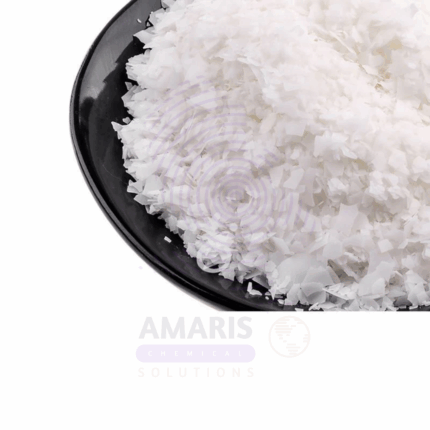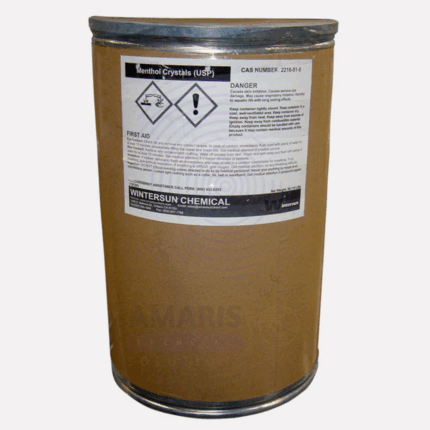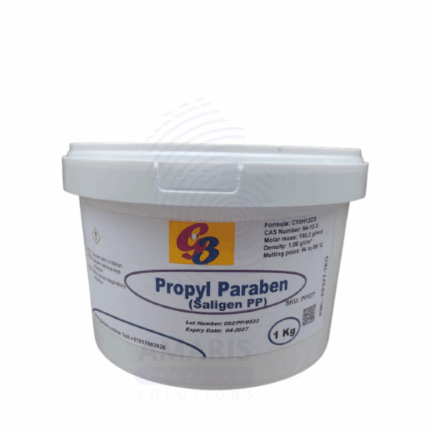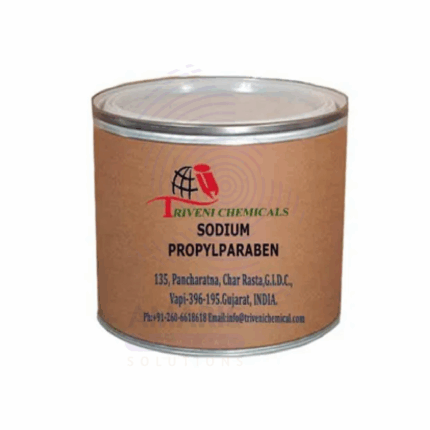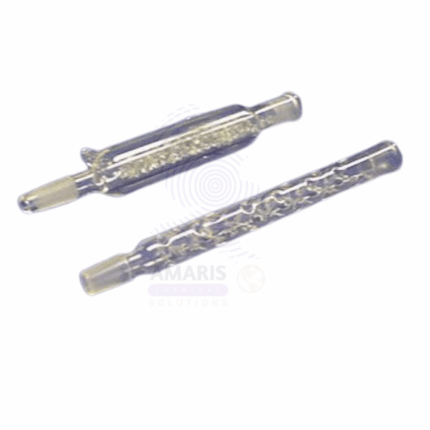

Tween 60 (Polysorbate 60)
Tween 60, or Polysorbate 60, is a non-ionic surfactant and emulsifier synthesized from sorbitan monostearate and ethylene oxide. It is part of the polysorbate family and is used to stabilize oil-in-water emulsions in food, pharmaceuticals, and personal care products. It appears as a yellowish, viscous liquid or waxy paste at room temperature. Known for its high Hydrophilic-Lipophilic Balance (HLB), Tween 60 is ideal for solubilizing fats, oils, and vitamins in aqueous solutions and enhancing product texture and shelf life.
Primary Uses
Food Industry:
Used as an emulsifier and stabilizer in baked goods, non-dairy creamers, whipped toppings, sauces, and desserts.
Improves texture and moisture retention in cakes, breads, and frostings.
Aids in fat dispersion and prevents separation in margarine and processed foods.
Helps maintain foam structure in beverages and toppings.
Cosmetics and Personal Care:
Functions as an emulsifier and dispersant in creams, lotions, body butters, and hair conditioners.
Enhances spreadability and skin feel in oil-in-water emulsions.
Solubilizes essential oils and active ingredients in formulations like facial cleansers and serums.
Pharmaceutical Industry:
Used as a solubilizing agent in topical and oral drug formulations.
Included in injectable emulsions and vaccine stabilizers to ensure uniform dispersion of lipophilic compounds.
Assists in controlled release and improved bioavailability of poorly soluble drugs.
Nutraceuticals & Supplements:
Used in soft gels and liquid supplements to emulsify fat-soluble vitamins and extracts.
Secondary Uses
Industrial Cleaners:
Functions as a non-ionic surfactant in specialty cleaners for oil and grease removal.
Textile Industry:
Acts as a wetting agent and emulsifier during dyeing and finishing processes.
Agriculture:
Used in pesticide emulsions and foliar spray formulations to improve wetting and spreading on leaves.
Paints and Coatings:
Serves as a dispersing agent for pigments and resins in water-based paints.
Laboratory Use:
Applied in biological assays and buffers as a solubilizing agent for hydrophobic substances.
Chemical Name (IUPAC): Polyoxyethylene (20) sorbitan monostearate
Common/Trade Name: Tween 60, Polysorbate 60
CAS Number: 9005-67-8
HS Code: 3402.13.00
Synonyms: Polyoxyethylene sorbitan monostearate, PEG-20 sorbitan stearate
Physical & Chemical Properties
Physical State: Waxy solid or thick liquid (depending on temperature)
Color & Odor: Yellow to amber; mild fatty odor
Melting Point: ~45–50 °C
Solubility: Soluble in water, ethanol; insoluble in oils
pH (1% solution): 5.0–7.0
HLB Value: ~14.9 (highly hydrophilic)
Density: ~1.07 g/cm³
Viscosity: High at room temperature
Safety & Hazard Attributes
GHS Classification: Not classified as hazardous
Toxicity: Low toxicity; safe under approved concentrations in food, cosmetics, and pharma
Exposure Limits: No established occupational exposure limits
Irritation: Minimal; may cause mild eye or skin irritation in concentrated form
Storage & Handling Attributes
Storage Conditions: Store in a cool, dry, well-ventilated area away from heat and moisture
Container Type: HDPE drums or food-grade packaging
Shelf Life: 24 months in sealed containers
Handling Precautions: Avoid contamination and exposure to strong oxidizing agents
Regulatory & Compliance Attributes
Approved by FDA, EFSA, and JECFA for food use
Listed in USP, BP, and EP for pharmaceutical applications
Permitted in COSMOS and ECOCERT certified cosmetic formulations
Compliant with REACH, TSCA, and GMP guidelines
GRAS (Generally Recognized As Safe) when used within recommended levels
Environmental & Health Impact
Biodegradability: Readily biodegradable
Ecotoxicity: Low environmental hazard
Bioaccumulation: Not expected to bioaccumulate
PPE Required: Gloves and eye protection for industrial-scale handling
Handling Guidelines: Use in a well-ventilated area; avoid prolonged contact
Storage Measures: Keep container tightly closed; avoid freezing
First Aid Measures
Inhalation: Move to fresh air if mist is inhaled in high concentrations
Skin Contact: Wash with soap and water
Eye Contact: Rinse with plenty of water; seek medical advice if irritation continues
Ingestion: Non-toxic in small amounts; consult a physician if large quantities are ingested
Firefighting Measures
Fire Hazards: Combustible at high temperatures
Extinguishing Media: Water spray, foam, dry chemical, or CO₂
Hazardous Combustion Products: Carbon monoxide, carbon dioxide


 Preservatives(food)
Preservatives(food) Flavor Enhancers
Flavor Enhancers Acidulants
Acidulants Sweeteners
Sweeteners Antioxidants
Antioxidants Colorants(food)
Colorants(food) Nutraceutical Ingredients (food)
Nutraceutical Ingredients (food) Nutrient Supplements
Nutrient Supplements Emulsifiers
Emulsifiers
 Collectors
Collectors Dust Suppressants
Dust Suppressants Explosives and Blasting Agents
Explosives and Blasting Agents Flocculants and Coagulants
Flocculants and Coagulants Frothers
Frothers Leaching Agents
Leaching Agents pH Modifiers
pH Modifiers Precious Metal Extraction Agents
Precious Metal Extraction Agents
 Antioxidants(plastic)
Antioxidants(plastic) Colorants (Pigments, Dyes)
Colorants (Pigments, Dyes) Fillers and Reinforcements
Fillers and Reinforcements Flame Retardants
Flame Retardants Monomers
Monomers Plasticizers
Plasticizers Polymerization Initiators
Polymerization Initiators Stabilizers (UV, Heat)
Stabilizers (UV, Heat)
 Antifoaming Agents
Antifoaming Agents Chelating Agents
Chelating Agents Coagulants and Flocculants
Coagulants and Flocculants Corrosion Inhibitors
Corrosion Inhibitors Disinfectants and Biocides
Disinfectants and Biocides Oxidizing Agents
Oxidizing Agents pH Adjusters
pH Adjusters Scale Inhibitors( water)
Scale Inhibitors( water)
 Antioxidants(cosmetic)
Antioxidants(cosmetic) Emollients
Emollients Fragrances and Essential Oils
Fragrances and Essential Oils Humectants
Humectants Preservatives
Preservatives Surfactants(cosmetic)
Surfactants(cosmetic) Thickeners
Thickeners UV Filters
UV Filters
 Fertilizers
Fertilizers Soil Conditioners
Soil Conditioners Plant Growth Regulators
Plant Growth Regulators Animal Feed Additives
Animal Feed Additives Biostimulants
Biostimulants Pesticides (Herbicides, Insecticides, Fungicides)
Pesticides (Herbicides, Insecticides, Fungicides)
 Active Pharmaceutical Ingredients (APIs)
Active Pharmaceutical Ingredients (APIs) Excipients
Excipients Solvents(pharmaceutical)
Solvents(pharmaceutical) Antibiotics
Antibiotics Antiseptics and Disinfectants
Antiseptics and Disinfectants Vaccine Adjuvants
Vaccine Adjuvants Nutraceutical Ingredients (pharmaceutical)
Nutraceutical Ingredients (pharmaceutical) Analgesics & Antipyretics
Analgesics & Antipyretics
 Analytical Reagents
Analytical Reagents Solvents(lab)
Solvents(lab) Chromatography Chemicals
Chromatography Chemicals Spectroscopy Reagents
Spectroscopy Reagents microbiology-and-cell-culture-reagents
microbiology-and-cell-culture-reagents Molecular Biology Reagents
Molecular Biology Reagents Biochemical Reagents
Biochemical Reagents Inorganic and Organic Standards
Inorganic and Organic Standards Laboratory Safety Chemicals
Laboratory Safety Chemicals Specialty Laboratory Chemicals(Special Laboratory Equipment)
Specialty Laboratory Chemicals(Special Laboratory Equipment)
 Demulsifiers
Demulsifiers Hydraulic Fracturing Fluids
Hydraulic Fracturing Fluids Scale Inhibitors(oil)
Scale Inhibitors(oil) Surfactants(oil)
Surfactants(oil) Drilling Fluids
Drilling Fluids
 Dyes and Pigments
Dyes and Pigments Bleaching Agents
Bleaching Agents Softening Agents
Softening Agents Finishing Agents
Finishing Agents Antistatic Agents
Antistatic Agents
 Admixtures
Admixtures Waterproofing Agents
Waterproofing Agents Sealants and Adhesives
Sealants and Adhesives Curing Compounds
Curing Compounds Concrete Repair Chemicals
Concrete Repair Chemicals Anti-Corrosion Coatings
Anti-Corrosion Coatings
 Surfactants(cleaning)
Surfactants(cleaning) Builders
Builders Enzymes
Enzymes Solvents (Cleaning)
Solvents (Cleaning) Fragrances
Fragrances
 Electronic Chemicals
Electronic Chemicals Catalysts
Catalysts Lubricants
Lubricants Photographic Chemicals
Photographic Chemicals Refrigerants
Refrigerants Automotive chemicals
Automotive chemicals Pyrotechnic Chemicals
Pyrotechnic Chemicals
 Biodegradable Surfactants
Biodegradable Surfactants Bio-based Solvents
Bio-based Solvents Renewable Polymers
Renewable Polymers Carbon Capture Chemicals
Carbon Capture Chemicals Wastewater Treatment Chemicals
Wastewater Treatment Chemicals
 Pigments
Pigments Solvents(paint)
Solvents(paint) Specialty Coatings
Specialty Coatings Binders/Resins
Binders/Resins Additives
Additives Driers
Driers Anti-Corrosion Agents
Anti-Corrosion Agents Functional Coatings
Functional Coatings Application-Specific Coatings
Application-Specific Coatings
 Fresh Herbs
Fresh Herbs Ground Spices
Ground Spices Whole Spices
Whole Spices Spice Blends
Spice Blends Dried Herbs
Dried Herbs
 Leavening Agents
Leavening Agents Dough Conditioners
Dough Conditioners Flour Treatments
Flour Treatments Fat Replacers
Fat Replacers Decoratives
Decoratives Preservatives(baking)
Preservatives(baking)
 Plasticizers & Softeners
Plasticizers & Softeners Reinforcing Agents
Reinforcing Agents Adhesion Promoters
Adhesion Promoters Vulcanizing Agents
Vulcanizing Agents Antidegradants
Antidegradants Blowing Agents
Blowing Agents Fillers & Extenders
Fillers & Extenders Accelerators & Retarders
Accelerators & Retarders




